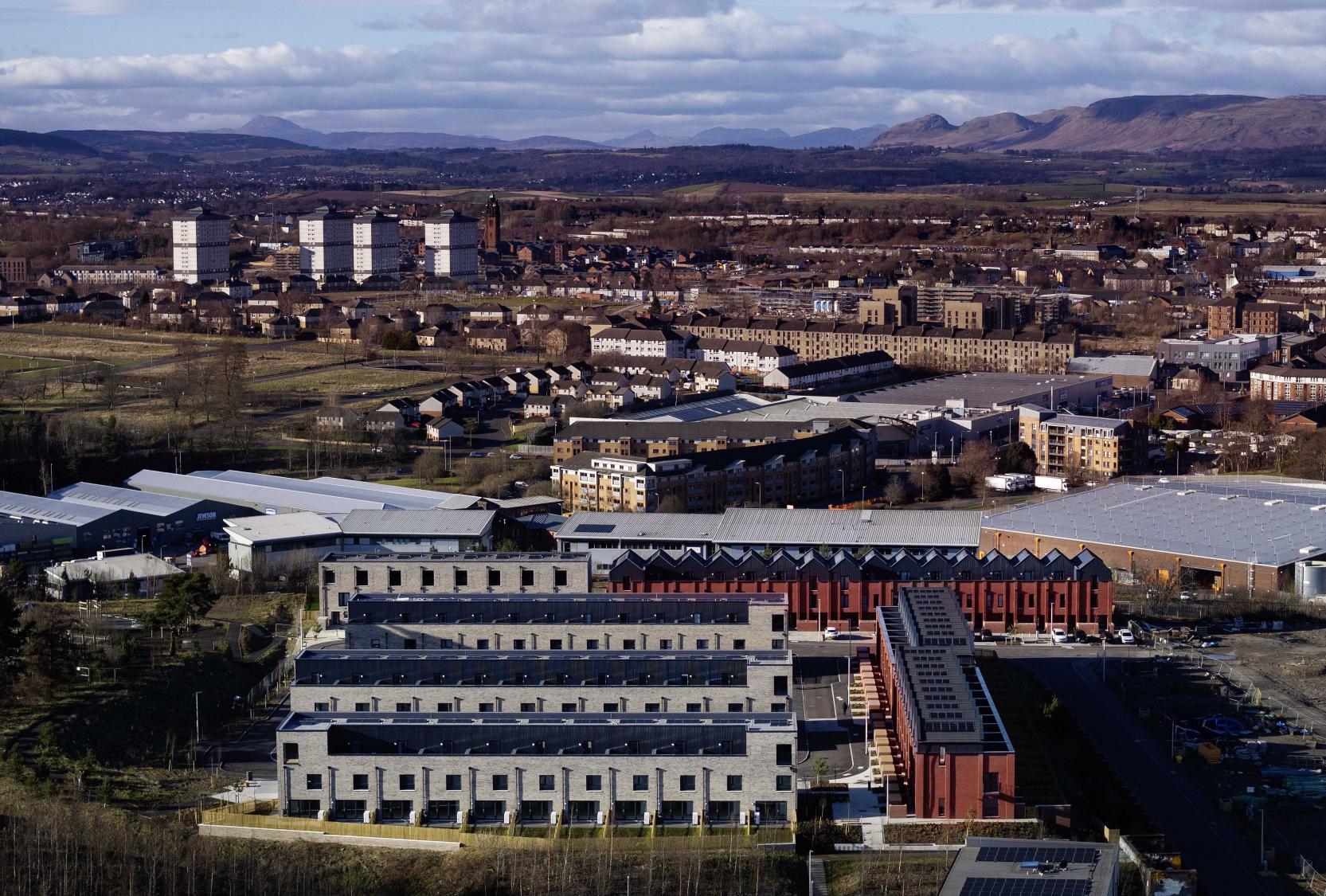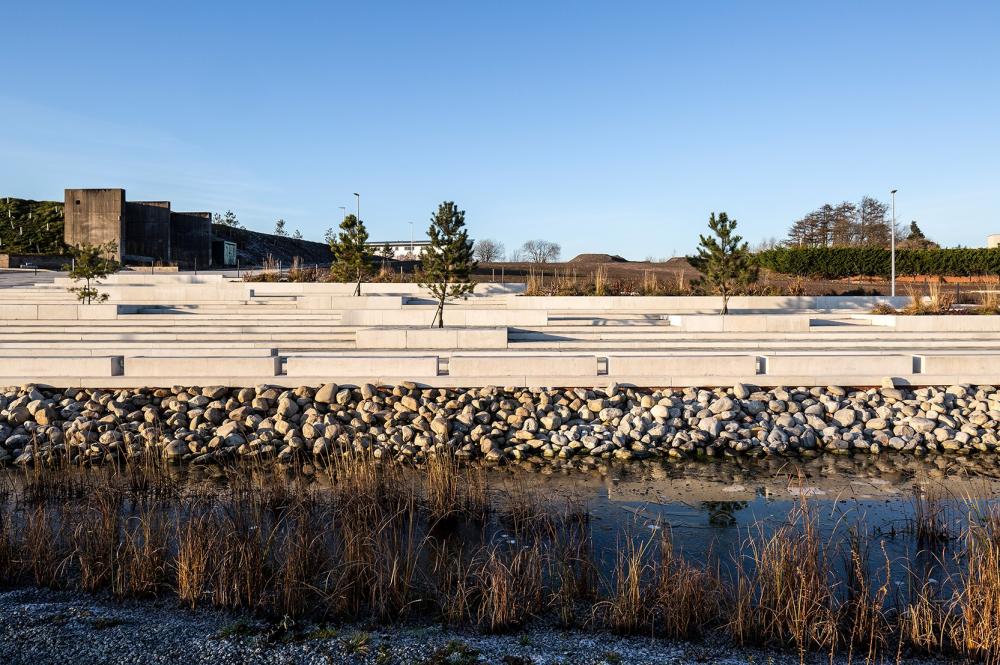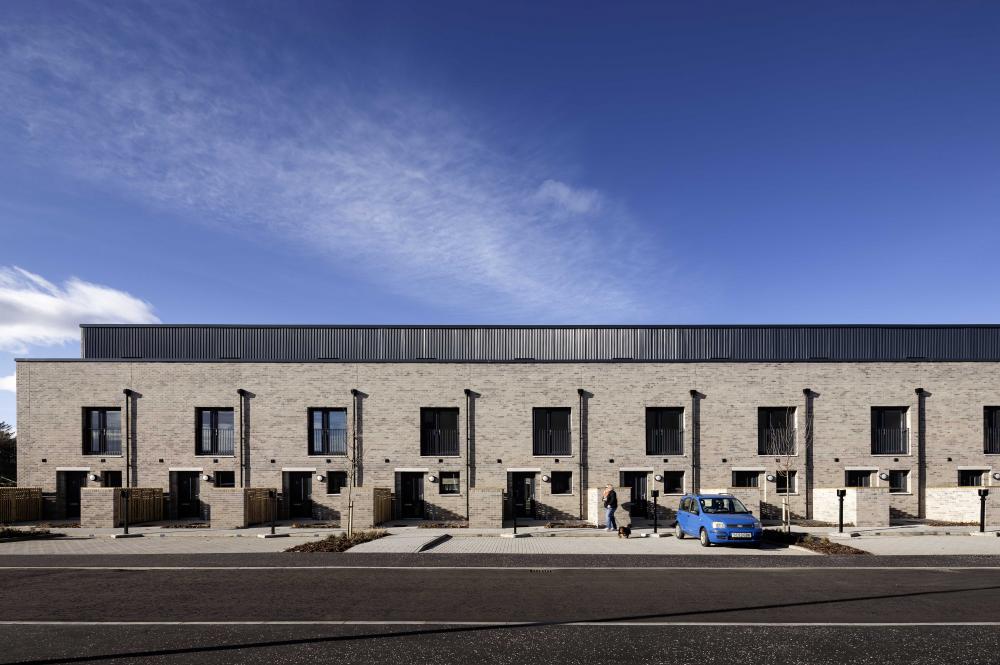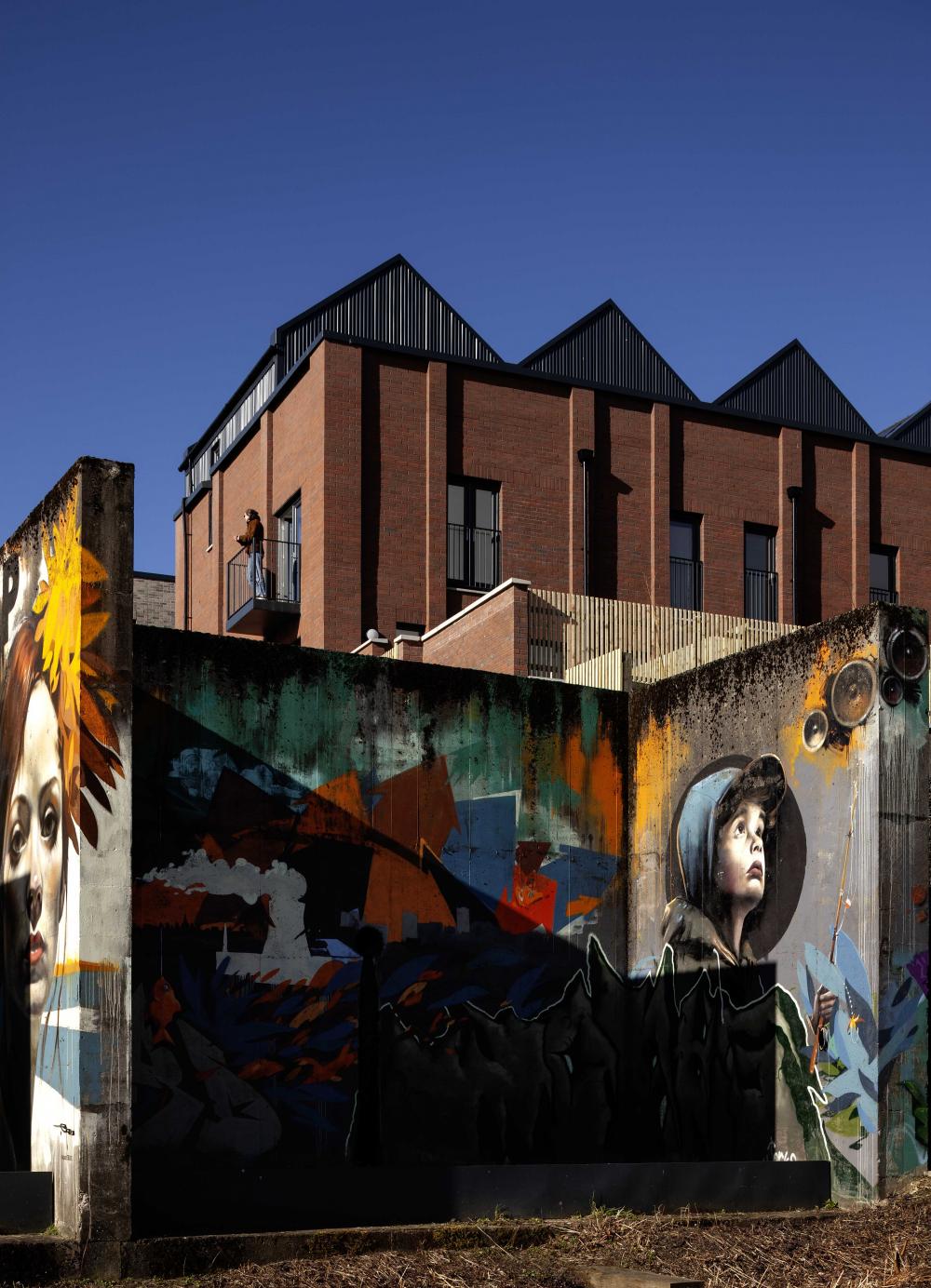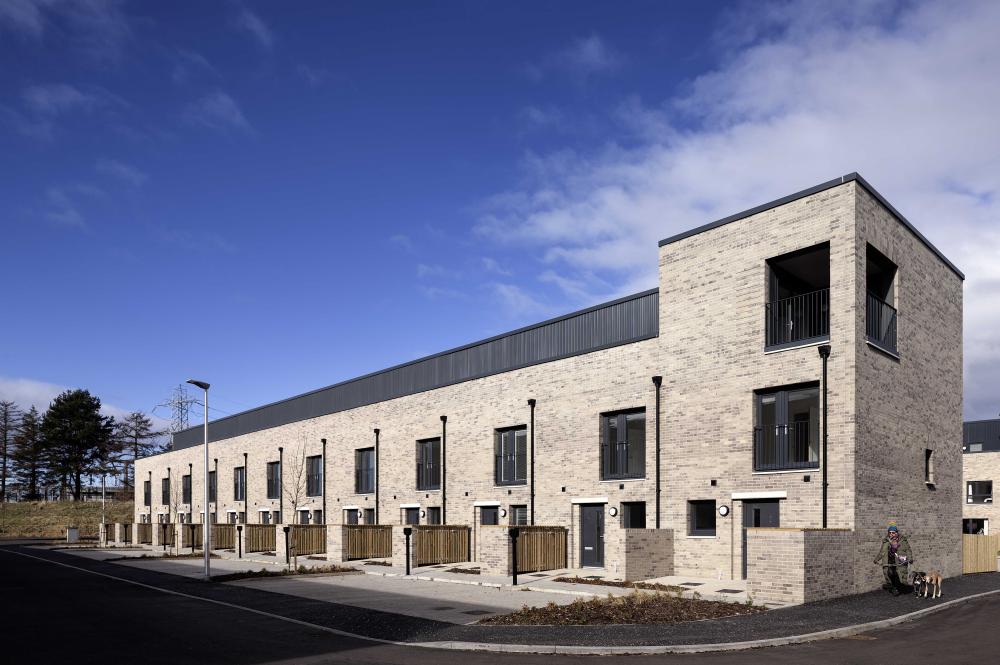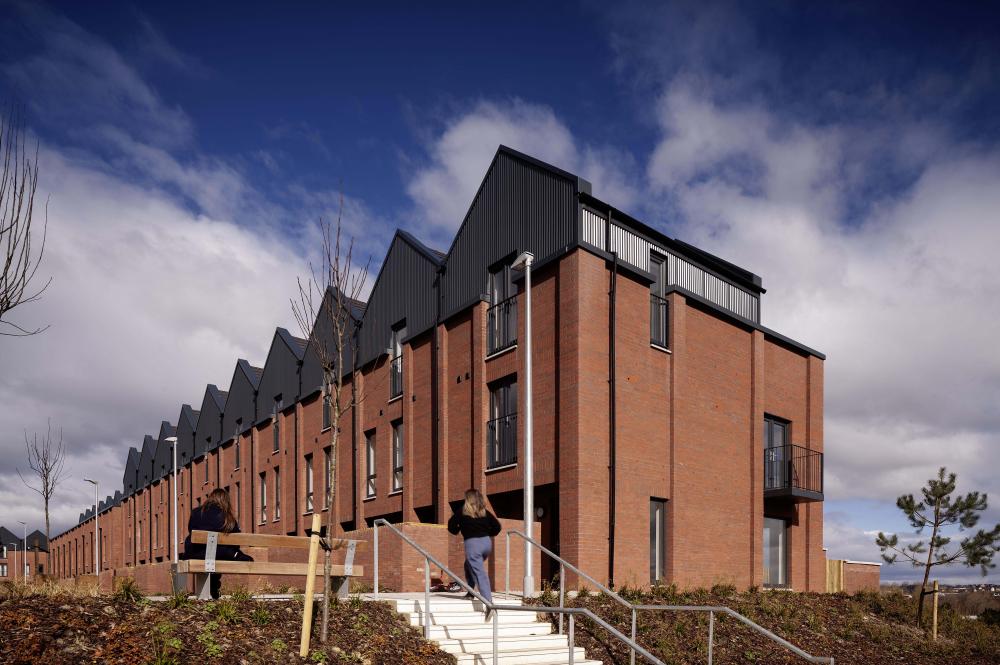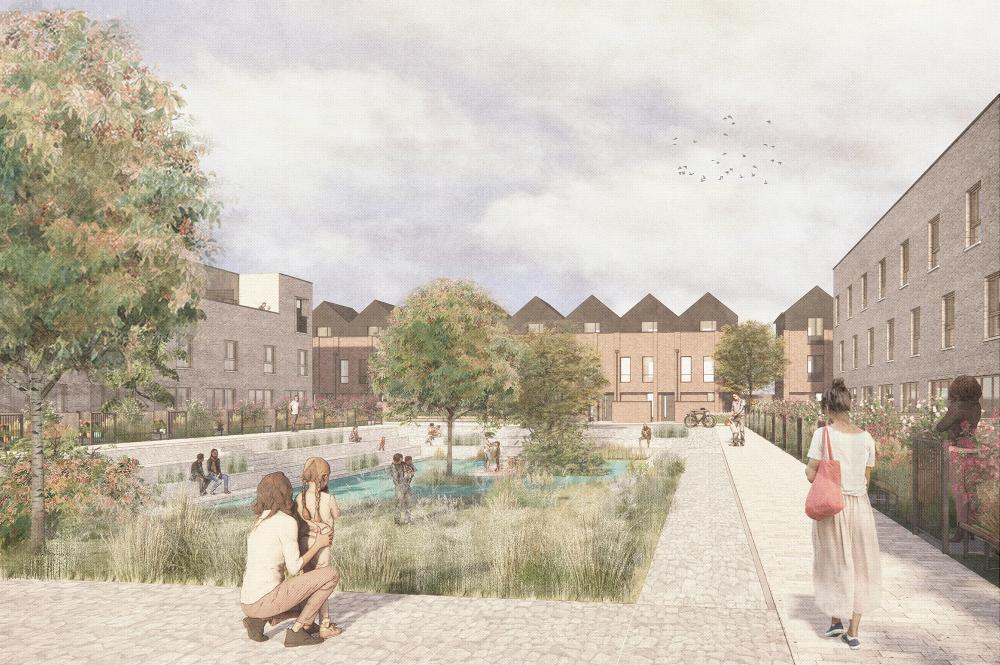Dundashill is a vibrant, climate-resilient, creative destination where community living blends with canalside adventure. In 2018, Stallan-Brand and Ann Nisbet Studio were invited by regeneration developer igloo to develop a custom build housing solution for a phase of the ambitious Dundashill masterplan for 600 homes. This initial exercise explored custom build as an innovative alternative to housing, highlighting new approaches to delivering sustainable urban housing. Subsequently, Stallan-Brand and Ann Nisbet Studio were appointed to deliver Dundashill Plot 4A, known as ‘Maltings Wynd’. This phase involves the development of 78 townhouses on a brownfield site at Dundashill and is the second phase of the masterplan to be completed.
Port Dundas was the terminus of a branch of the Forth and Clyde Canal area, and became an industrial centre in the 19th century with a vast array of industries operating, including chemical works, textile mills, distilleries, granaries, iron foundries, and glass works. This rich industrial heritage plays a defining role in the character of Dundashill, establishing new development in its north Glasgow industrial context and creating a strong sense of identity.
The ambition of Stallan-Brand and Ann Nisbet Studio was to develop a sensibility in the architectural approach, which would share similar ideas and together create a harmonious feel across the plot, but with enough variation to bring richness and interest.
The architectural language is underpinned by a considered street hierarchy and in rooting the buildings in their context. Both designs celebrate the North Glasgow context, with a rigour and rhythm applied to elevations, and a simple and harmonious material palette. The two architectures sit side by side, complementary to each other, while creating different street conditions. The Ann Nisbet Studio terraces, with their sawtooth roofscape, create a dynamic edge onto Vinter Street and along the northern edge of the site. The Stallan-Brand terraces are located at the interior of the site, forming the internal streets.
There was a willingness to embrace new and innovative compact housing typologies with a shift away from more traditional ideas and carefully considering how design approach can make the best use of developable land to create sustainable, nature-focused and safe, and secure neighbourhoods.
